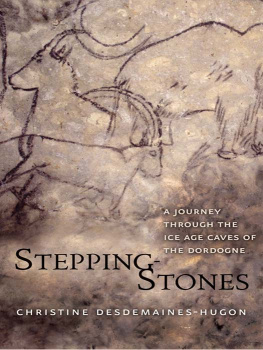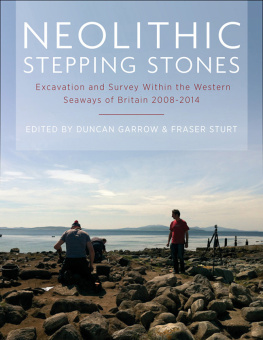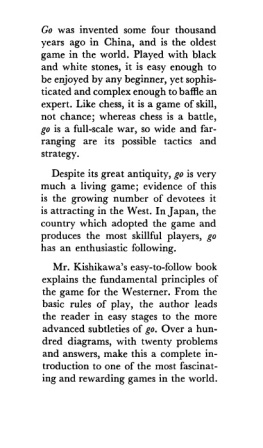Christine Desdemaines-Hugon - Stepping-Stones
Here you can read online Christine Desdemaines-Hugon - Stepping-Stones full text of the book (entire story) in english for free. Download pdf and epub, get meaning, cover and reviews about this ebook. year: 2010, publisher: Yale University Press (Ignition), genre: Children. Description of the work, (preface) as well as reviews are available. Best literature library LitArk.com created for fans of good reading and offers a wide selection of genres:
Romance novel
Science fiction
Adventure
Detective
Science
History
Home and family
Prose
Art
Politics
Computer
Non-fiction
Religion
Business
Children
Humor
Choose a favorite category and find really read worthwhile books. Enjoy immersion in the world of imagination, feel the emotions of the characters or learn something new for yourself, make an fascinating discovery.
- Book:Stepping-Stones
- Author:
- Publisher:Yale University Press (Ignition)
- Genre:
- Year:2010
- Rating:3 / 5
- Favourites:Add to favourites
- Your mark:
- 60
- 1
- 2
- 3
- 4
- 5
Stepping-Stones: summary, description and annotation
We offer to read an annotation, description, summary or preface (depends on what the author of the book "Stepping-Stones" wrote himself). If you haven't found the necessary information about the book — write in the comments, we will try to find it.
Stepping-Stones — read online for free the complete book (whole text) full work
Below is the text of the book, divided by pages. System saving the place of the last page read, allows you to conveniently read the book "Stepping-Stones" online for free, without having to search again every time where you left off. Put a bookmark, and you can go to the page where you finished reading at any time.
Font size:
Interval:
Bookmark:
Foreword by Ian Tattersall
Yale
UNIVERSITY
PRESS
NEW HAVEN AND LONDON
Published with assistance from the foundation established in memory of Amasa Stone Mather of the Class of 1907, Yale College.
Copyright 2010 by
Christine Desdemaines-Hugon.
All rights reserved.
This book may not be reproduced, in whole or in part, including illustrations, in any form (beyond that copying permitted by Sections 107 and 108 of the U.S. Copyright Law and except by reviewers for the public press), without written permission from the publishers.
Designed by Mary Valencia.
Set in Minion type by Tseng Information
Systems, Inc.
Printed in the United States of America.
Library of Congress Cataloging-in-Publication Data
Desdemaines-Hugon, Christine, 1946
Stepping-stones : a journey through the Ice Age caves of the Dordogne / Christine Desdemaines-Hugon; foreword by Ian Tattersall.
p. cm.
Includes bibliographical references and index.
ISBN 978-0-300-15266-1 (cloth : alk. paper) 1. Art, Prehistoric France Dordogne. 2. Cave paintings France Dordogne. I. Title. II. Title. A journey through the Ice Age caves of the Dordogne.
N5310.5.F7D47 2010
709.0112094472 dc22
2009039258
A catalogue record for this book is available from the British Library.
This paper meets the requirements of ANSI/NISO Z39.481992 (Permanence of Paper).
10 9 8 7 6 5 4 3 2 1
our three daughters, Kareen, Maya, and Laura,
and our seven grandchildren,
Lo, Chloe, Jean, Jules, Samuel, Flix, and Jim Romo
Color Plates
1. Font de Gaume. Two bison head to head, with superimposed mammoth(s)
2. Font de Gaume. Superimposed bison, mammoths, reindeer, and horses
3. Font de Gaume. The licking reindeer
4. Font de Gaume. The black frieze
5. Font de Gaume. One of the finest polychromatic bison, in the last gallery
6. Font de Gaume. The small bison chamber
7. Rouffignac. Detail of the ten mammoths frieze
8. Cap Blanc. The left-hand section of the 12-meter-long sculpted frieze, including the magnificent life-size central horse
Figures
There can be few experiences more overwhelming than encountering, for the first time, the finest of the Ice Age cave paintings of southern France and northern Spain. This art, mind-bogglingly ancient though it is, reaches across the millennia, reminding us that the Cro-Magnon artists who created it were us in the most profound of senses. Never before in the long history of human evolution had such art been created, and in its expressiveness and power it has rarely been equaled since. Sometimes miraculously preserved, sometimes sadly faded but eloquent nonetheless, it speaks to something profound and essential in the human spirit.
Of course, the societies to which the Cro-Magnon artists belonged, and the environments in which they improbably flourished, are long gone. Besides their art, nothing remains to tell us about them except the detritus of their everyday existences. Limited as they are, these archaeological traces are ample evidence that the Cro-Magnons had complex, nuanced interior lives, and had forged a hugely complex relationship with the world around them. Clearly, these early Homo sapiens were symbolic, just as we are, re-creating the world in their heads in a way no other living organism had or has ever done.
We should not be surprised, then, that Cro-Magnon cave art was evidently far more than mere decoration: that it went well beyond simple aesthetics or literal representation, to embody and explain its makers view of the world and their place in it. There can equally be no doubt that the very spaces in which it was made possessed a significance to the artists that lay well beyond the mundane. Sadly, though, the material record is frustratingly silent on issues beyond the technical. The Cro-Magnons bequeathed us only the most indirect clues to the systems of belief that informed their lives and their art; in all likelihood the details of those beliefs are lost beyond recovery.
Still, we are today every bit as curious as the Cro-Magnons evidently were, 20,000 years ago; and when we leave the special places where their art has been preserved, we cannot help but be assailed with questions, answerable or not. Just who were those artists? How did they live? What motivated them? What did their art mean to them? And why did they create it in such mysterious and sometimes spectacularly inaccessible places?
When your head is ringing with such issues, there is no better companion than Christine Desdemaines-Hugon. An archaeologist by training, with a specialty in the symbolisms of small-scale Cro-Magnon portable art, she is also the preeminent English-language guide to the Ice Age decorated caves of the Dordogne region. In a quarter-century of sharing these astonishing sites with specialists and the general public alike, she has gained an extraordinary familiarity with them. And over years of personal study, she has developed a subtle understanding of the harmonies and complexities of these unique spaces.
In this book Christine takes the reader to five of the most renowned decorated caves in the vicinity of Les Eyzies, the French capital of prehistory on the Vzre River: Font de Gaume, Combarelles, Cap Blanc, Rouffignac, and Bernifal. This judicious choice runs the gamut: vast interiors and intimate ones; caves and rock shelters; polychrome paintings and delicate engravings; bas-reliefs and finger tracings; bold animals and obscure geometric symbols. Christines accounts resonate with her affection for these ancient Ice Age haunts, each so different from all the others. Her descriptions are suffused by her intimate knowledge of the images, and of the places they adorn. And her interpretations are informed by her unique way of seeing with the eyes both of an archaeologist and of an artist.
Stepping-Stones is the culmination of many years of thought and experience, and consulting this remarkable book before visiting any of these Ice Age sites will add immeasurably to the experience of novices and seasoned aficionados of Paleolithic art alike. But beyond this, the book is a tour of the entire late Ice Age, weaving in a wealth of information from sites all over Europe to produce a remarkable tapestry of the Cro-Magnon world.
Of course, Cro-Magnon art is ultimately more to be experienced than explained. Nothing can compare to the experience of standing in front of one of these extraordinary works and absorbing its mute power. Nonetheless, a sensitive and knowledgeable guide can add vastly to the viewers experience (or even if need be, substitute for it), precisely by showing what can be explained or discerned, and what cannot. Nobody does this better than Christine Desdemaines-Hugon.
Ian Tattersall
American Museum of Natural History, New York City
This book is a personal approach to Paleolithic cave art and, more generally, an ode to our ancestors intelligence and creativity. It is inspired by my longtime wish to share with others the cave experience as a whole and Ice Age art in particular, in all its complexity and subtlety. Although we do not know what reasons lie behind the art, we still have the immense privilege of being allowed to see it and measure the extraordinary talent and sensibility of Cro-Magnon artists. What readers will discover in the cave art will bring them into contact, in an immediate and tangible way, with people who lived in the Vzre Valley some 14,000 years ago, people just like ourselves. The gradual recognition of the fine quality of the painting, engraving, and sculpting techniqueswhich havent changed sincewill allow the readers to imagine the hand at work. The subtlety of line and shading, the individual character and expression of each animal, the gentleness of the animals manner, the vast realm of schematic and nonfigurative imagery will open up new perspectives in the approach to the mind and spirit of these early modern humans.
Font size:
Interval:
Bookmark:
Similar books «Stepping-Stones»
Look at similar books to Stepping-Stones. We have selected literature similar in name and meaning in the hope of providing readers with more options to find new, interesting, not yet read works.
Discussion, reviews of the book Stepping-Stones and just readers' own opinions. Leave your comments, write what you think about the work, its meaning or the main characters. Specify what exactly you liked and what you didn't like, and why you think so.







